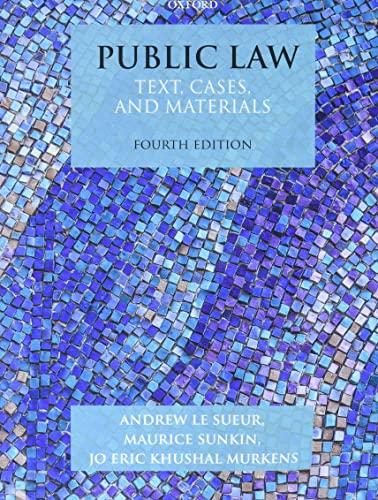Question
Here are the links for the assignment, The question I chose is B1 http://www.columbia.edu/itc/english/f1124y-001/resources/Young_Goodman_Brown.pdf https://www.ibiblio.org/ebooks/Irving/Winkle/Irving_Winkle.pdf https://youtu.be/XWqVMNUawso https://www.ibiblio.org/ebooks/Douglass/Narrative/Douglass_Narrative.pdf https://youtu.be/PdHpaAW5BGw Hi, I need help with this assigment
Here are the links for the assignment, The question I chose is B1
http://www.columbia.edu/itc/english/f1124y-001/resources/Young_Goodman_Brown.pdf
https://www.ibiblio.org/ebooks/Irving/Winkle/Irving_Winkle.pdf
https://youtu.be/XWqVMNUawso
https://www.ibiblio.org/ebooks/Douglass/Narrative/Douglass_Narrative.pdf https://youtu.be/PdHpaAW5BGw
Hi, I need help with this assigment .Thanks. The one i chose is B1.
Here is my answer,
B1.) Explain ONE similarity between Young Goodman Brown, The Slave Narrative: Frederick Douglass and Rip Van Winkle. This similarity could relate to anything. One does not have to focus on content, but you must explain and prove your point.
The three works - Young Goodman Brown by Nathaniel Hawthorne, The Slave Narrative: Frederick Douglass and Rip Van Winkle by Washington Irving are widely considered as some of the most influential works of American literature. These works, each in their own ways, offer a window into the societal context of their respective eras and explore the themes of identity and morality. In this paper, I will analyze the similarities between the three works, exploring how they reflect the social and cultural norms of their time, and how they can be used to understand the respective eras. Young Goodman Brown Young Goodman Brown, written by Nathaniel Hawthorne, is a short story that follows Young Goodman Brown as he journeys into the woods and encounters various dark forces. Throughout his journey, Young Goodman Brown is confronted with the harsh reality of the society in which he lives. He discovers that the people he thought were virtuous and pious are actually dark and corrupt. The story is a commentary on the hypocrisy of society, as well as the corruption of religious leaders. The Slave Narrative: Frederick Douglass the Slave Narrative: Frederick Douglass is a memoir written by former slave, Frederick Douglass. In the narrative, Douglass tells a story of his enslavement and the struggles he endured as a slave. He recounts the physical and psychological abuse that he and other slaves endured, as well as the harsh and oppressive nature of the slave system. The narrative serves as a powerful testament to the horrors of slavery and the strength of the African American community. Rip Van Winkle Rip Van Winkle is a short story written by Washington Irving. It follows the titular character, Rip Van Winkle, as he journeys into the Catskills and falls asleep for 20 years. Upon waking up, he finds that the world has changed drastically. He discovers that the people he knew and the customs he followed are now gone, replaced by a new set of values and customs. The story is a commentary on the changes in society, as well as the importance of embracing change and adapting to new circumstances. Similarities between the works The three works - Young Goodman Brown, The Slave Narrative: Frederick Douglass and Rip Van Winkle - share several similarities. First, all three works explore the themes of identity and morality. In Young Goodman Brown, Young Goodman Brown is confronted with the harsh reality of the society in which he lives and discovers that the people he thought were virtuous and pious are actually dark and corrupt. In The Slave Narrative: Frederick Douglass, Douglass recounts the physical and psychological abuse that he and other slaves endured, as well as the oppressive nature of the slave system. In Rip Van Winkle, Rip discovers that the people he knew and the customs he followed are now gone, replaced by a new set of values and customs. All three works explore the themes of identity and morality, and how these themes can be affected by external forces. Second, all three works depict the changes that occur in society over time. Young Goodman Brown is a commentary on the hypocrisy of society, as well as the corruption of religious leaders. The Slave Narrative: Frederick Douglass is a powerful testament to the horrors of slavery and the strength of the African American community. Rip Van Winkle is a commentary on the changes in society, as well as the importance of embracing change and adapting to new circumstances. All three works explore the changes that occur in society over time, and how those changes can affect individuals. Third, all three works serve as a window into the societal context of their respective eras. Young Goodman Brown is set in Puritan New England, a society in which religion and morality were of utmost importance. The Slave Narrative: Frederick Douglass is set in the Antebellum South, a society in which slavery was the norm. Rip Van Winkle is set in post-Revolutionary America, a society in which the country was still trying to find its footing after the war. All three works provide insight into the societal context of their respective eras, and how those contexts shaped the characters and stories. Conclusion In conclusion, Young Goodman Brown, The Slave Narrative: Frederick Douglass and Rip Van Winkle are three works of American literature that share several similarities. All three works explore the themes of identity and morality, depict the changes that occur in society over time, and serve as a window into the societal context of their respective eras. By analyzing these works, we can gain insight into the social and cultural norms of their respective eras and understand how literature can be used to reflect and comment on the world around us.
References
Hawthorne, N. (1835). Young Goodman Brown. Retrieved from http://www.columbia.edu/itc/english/f1124y-001/resources/Young_Goodman_Brown.pdf Irving,W. (1822). Rip Van Winkle. Retrieved from https://www.ibiblio.org/ebooks/Irving/Winkle/Irving_Winkle.pdf Douglass, F. (1845). The Slave
Narrative: Frederick Douglass. Retrieved from https://www.ibiblio.org/ebooks/Douglass/Narrative/Douglass_Narrative.pdf Young Goodman
Brown. (n.d.). Retrieved fromhttps://youtu.be/XWqVMNUawso Rip Van Winkle. (n.d.).
Retrieved fromhttps://youtu.be/PdHpaAW5BGw
Step by Step Solution
There are 3 Steps involved in it
Step: 1

Get Instant Access to Expert-Tailored Solutions
See step-by-step solutions with expert insights and AI powered tools for academic success
Step: 2

Step: 3

Ace Your Homework with AI
Get the answers you need in no time with our AI-driven, step-by-step assistance
Get Started


